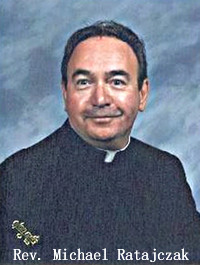Week 13 |
The Wadi Qelt |
November 26 |
| |
|
|
This past week a group of us from Tantur took almost a full day and hiked along the Wadi Qelt. A wadi is a rocky watercourse, dry throughout the year except in the rainy season.
The Wadi Qelt is sunk deep in a steep canyon. Its limestone walls burst with clumps of trees and foliage. The views along the wadi are spectacular and very beautiful.
The Wadi Qelt is part of the ancient “way” or road between Jerusalem and Jericho. Travelers between these two cities would have walked along this wadi. Jesus would have walked this way on his journeys to Jerusalem. The Wadi Qelt is the setting for the Parable of the Good Samaritan (Luke 10:29-37), “...a man fell victim to robbers as he went down from Jerusalem to Jericho...”
Besides the great natural beauty along this trail, one finds remnants of Herodian aqueducts dating back to the time of Jesus, Bedouin home sites and the Monastery of St. George.
The Bedouin are, historically, nomadic people. They still live in tents and breed camels and livestock. There are estimated to be about 70,000 Bedouins in Israel. However, only about 10% of the Bedouin remain nomadic; the rest have been forced into permanent, urban settlements.
Prior to 1948, the Bedouin tribes roamed widely throughout Israel especially the Negev Desert. Since the establishment of the State of Israel, though, traditional grazing lands have been lost to the kibbutzim and to the Israeli Defense Force (IDF) which has appropriated hundreds of square kilometers for bases, airstrips and ranges. Deprived of vital grazing areas for their flocks, the Bedouin have been left with little choice but to settle and attempt to adapt.
The Monastery of St. George, named after St. George of Koziba, was first built in the late 5th century, an elaboration of a small oratory built by hermits in the early 4th century. The monastery was abandoned after the Persian Invasion in the 7th century. The Persians swept through the valley and massacred the 14 monks who lived in the monastery.
The Crusaders made some attempts at restoration in 1179 but a pilgrim traveling in 1483 wrote that he only saw ruins there. More significant reconstruction was begun by the Greek Orthodox Church in 1878 and completed in 1901.
Traditions attached to the monastery include a visit by the Prophet Elijah on his way to Sinai, and Joachim, whose spouse Anne was sterile, weeping here when an angel announced to him the news of the Virgin Mary's conception.
The oldest part of the building is the 6th century mosaic floor of the Church of Ss. George and John. The skulls of the martyred monks are kept here and a niche contains the tomb of St. George.
The larger church was added by the Crusaders during their 12th century renovations. It was dedicated to the Blessed Virgin and it features a black, white and red double-headed Byzantine eagle.
Most of the paintings and icons seen today date from the latest reconstruction. However, the doors at the center of the iconostasis dates from the Crusaders.
I took some pictures along the way. Hope you enjoy the journey half as much as I did!



These photos show a typical Bedouin Homesite. Notice the beautiful garden growing in the midst of the desert. There is a lot of livestock as well. This family leaves near the river, the Wadi Qelt. Their small area is an oasis, indeed a beautiful site, with the precious gift of water nearby.



These burros belong to the Bedouin family. It is amazing how well they are able to graze on the precarious hillsides. These are the "wild asses" that are mentioned oftentimes in the Scriptures.

We came across this large building as we walked along the Wadi Qelt. It is a rather attractive building and would be a "small castle" for a family. Please note who lives there - the livestock! They occupy the bottom floor and were moving in and out of the building. Notice the curtains in the second floor window. The family probably lives there.


The Monastery of St. George is built right into the sheer cliffs of the Wadi Qelt. Quite spectacular! They have a guest house for priests who would like to make a retreat there. Maybe some day when I am due for a retreat and need to "get away from it all", I will find myself back at the monastery.

|